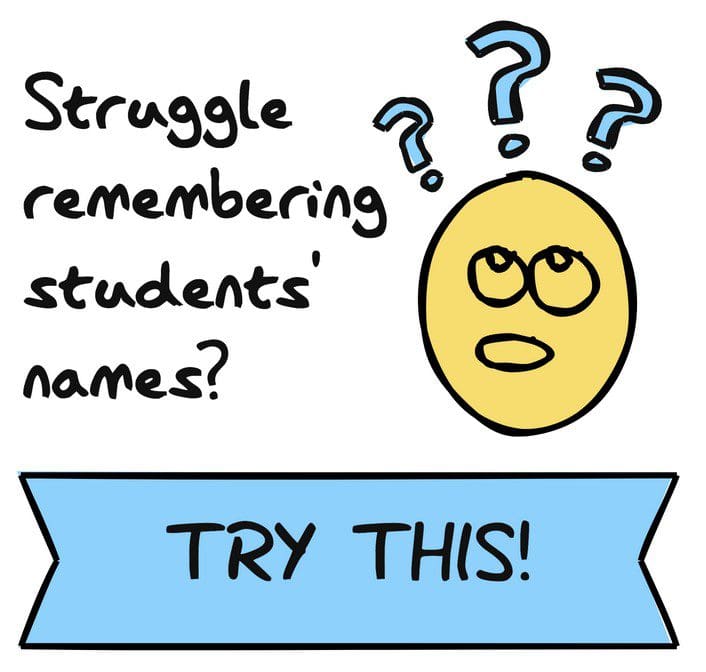
Relief teachers have a tough gig. You’re in a different class every day with different students and it can be a lot to keep on top of. Different faces, different names, and not to mention the different subjects and routines that you encounter every day.
Remembering our students’ names is one of the most important things that we can do as teachers. It helps you with managing their behaviour; why would a student listen to you if you can’t even remember their name? But it also helps with student wellbeing and sense of self-worth.
The problem
While scientists won’t put a limit on how many names we COULD remember, the average person only actually manages to remember around 150 names at a time. As a relief teacher, you might encounter this many new names in just a few days.
There’s not just the cognitive load of learning students’ names either. Many students will try to mess with relief teachers by giving the wrong names or otherwise trying to deliberately confuse you. This only makes your job more difficult.

With the number of names that you need to remember (and how little time you have to learn them), you need a solid strategy in place to help you.
The strategy
There are many different strategies that you can use to learn student names. These strategies will work differently depending on who you are as a teacher and your teaching persona, as well as the context. The strategies that work for a female relief teacher fresh out of uni are not necessarily going to be the same strategies that work for a tall, buff male teacher in his mid-thirties.
See more: 5 Strategies for Relief Teachers to Quickly Build Rapport with Students.
As a relief teacher, you want to make sure that you keep the class settled and set the expectations early. You don’t want to give them the chance to mess with you. The strategy below keeps this in mind, and always worked wonders for me.
Settle them first
The priority is to get students into the classroom and settled. Tell them what they need to do and get them started before you do anything else.
Many relief teachers will call the roll out first and introduce themselves. I am telling you not to do that. Get them settled and working first, whether that’s some quick mindfulness time for young students straight after recess or getting your Year 9s to get their books out immediately to write down the instructions for the lesson.
Go and ask them their names
Once they are working and starting to settle down, then I go and introduce myself to the students one at a time. I would walk around the room with the roll in hand and ask each of them their name quietly, as well as tell them mine.
This significantly reduced the amount of silliness as they were not encouraged to call out. I was also working one-on-one with each student so I could more easily build a connection with them. On top of all of this, I found that I was able to remember their names more easily when I was actually interacting with each individual student compared to just calling out the list and getting them to call back.

The results
The results of this technique can be profound. As I said before, it won’t work for every teacher in every situation, but I think it’s definitely worth a try. Particularly if what you’re currently doing isn’t working, nothing changes if nothing changes.
As a teacher, you need to be constantly reflecting on what you’re doing and the impact that it is having on your students. As a relief teacher particularly, you have some freedom to try things that are a bit outside the box without the risk as you don’t need to see the same students again.
Have a shot at this technique and see how it goes! If you do try it out, comment below to let us know how it went!





